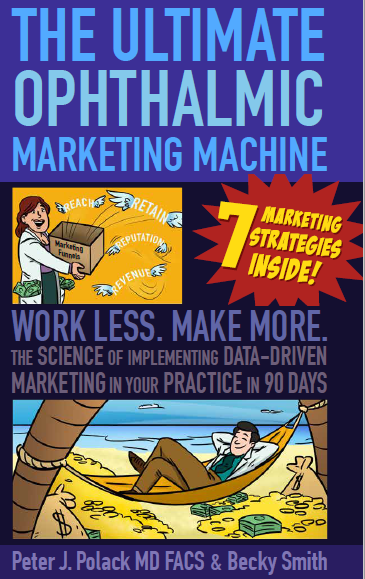Apologies to George Lucas, but if you want to increase patient conversions to your procedure or service, you’ll need channel your inner Obi-Wan Kenobi when it comes to your messaging.
But what that means is that you need to transfer their feelings of hope from things that are NOT your solution to things that ARE your solution.
So even if you’re not the actual one writing the copy for your marketing pieces, you still want to have a good grasp of effective copywriting to make the best use of your marketing dollars.
One great tool is a well-known formula in the copywriting world
Problem - Agitate - Solution
1. Present the Problem
2. Agitate the problem
3. Solve the problem
Unfortunately, most businesses, medical practices included, focus mostly on the solution and less even on the problem, and not at all on the agitation. And guess which of the three is the most important?
The middle step: Agitate
Why is that?
Well, if their problem was bad enough they would have already solved it. On the other hand if your solution was so great, they would've bought it already.
What makes the formula work he's making their pain level (figuratively, not literally) so high through agitation, that they are clamoring for your solution.
So instead of jumping from problem “Wear glasses?” to solution “Get LASIK!” You'll want to dig a little deeper into their thought process.
A major roadblock preventing a prospect from making a decision about a purchase is what is known as an ‘objection’ :
- It’s too expensive!
- It’s going to be painful!
- I don’t trust these guys!
- It’s not going to work!
Even if a mature practice has heard most of these, they likely have not heard all of them.
And focusing on the problem agitation is the best way you can address some of the objections or excuses that are ruminating in their thoughts, such as:
1. Doing Nothing
They could just avoid the problem or put off doing anything about it. Their HOPE is that the problem will just go away.
So you would say, “Here’s why putting off a decision to have [insert vision correction procedure here] is not a good idea. The older you are, the fewer years you will have to enjoy your new, clear vision, as aging changes start to effect our vision.” Or “You might just be thinking that your deteriorating vision is just a glasses problem but it could also be a sign of more serious problem so schedule an evaluation today.”
2. Going with the “Cheap” Solution
They could decide to wait until one of the discount LASIK centers is running a special.
So you would say, “Here’s why trying to save a few bucks is absolutely the wrong decision. Most of these places use bait and switch tactics so they end up nickel-and-diming you. Plus, you only meet your surgeon the day of the procedure. We have heard of patients being canceled on the day of their surgery because some issue wasn’t identified until the last minute. You don’t want to be in that situation!”
3. Doing It Yourself
OK, so maybe a prospect isn’t going to perform LASIK surgery on themselves. But maybe they think they can self-treat by buying one of those whacky “Cure Your Myopia Naturally” products floating around on the internet, or worse! The bottom line is that without a trustworthy source of information, prospective patients are liable to do anything to put off a decision to get an evaluation for a potentially life-changing procedure.
So you would say, “Here’s why trying to fix your myopia with laser vision pinhole glasses is a bad idea (especially at night)…”
Bottom Line:
Going through the Problem-Agitate-Solution exercise with an emphasis on the Agitate is a way to get inside the mind of your prospect and preemptively address objections to a purchasing decision.

